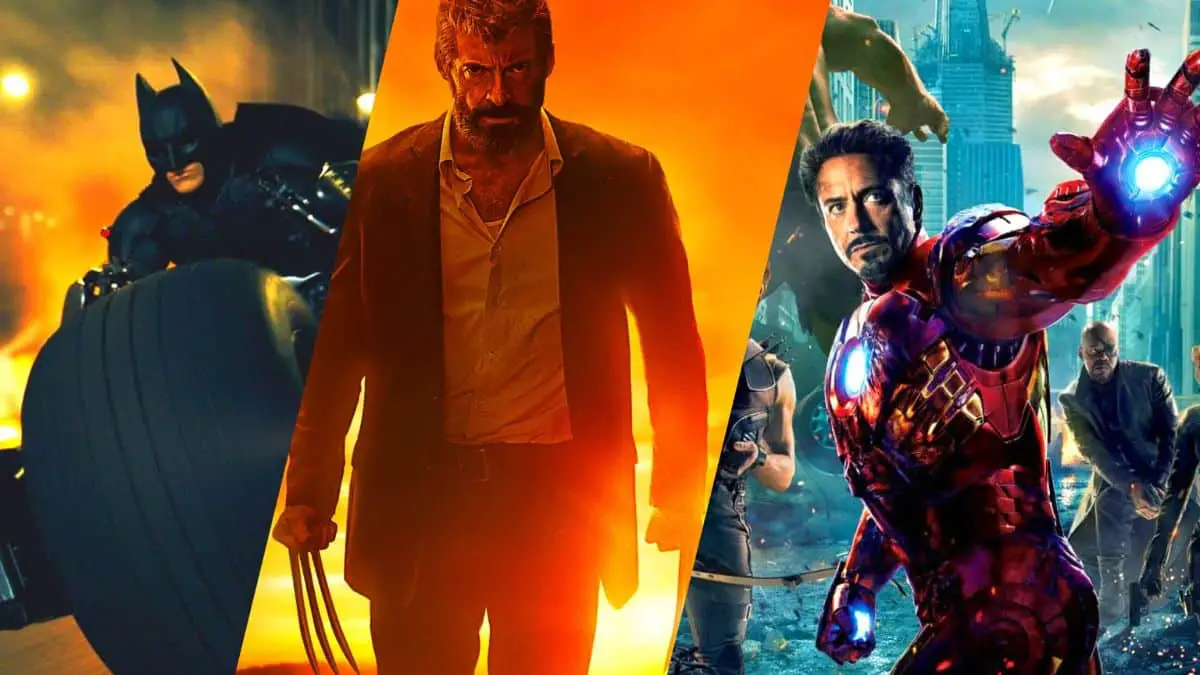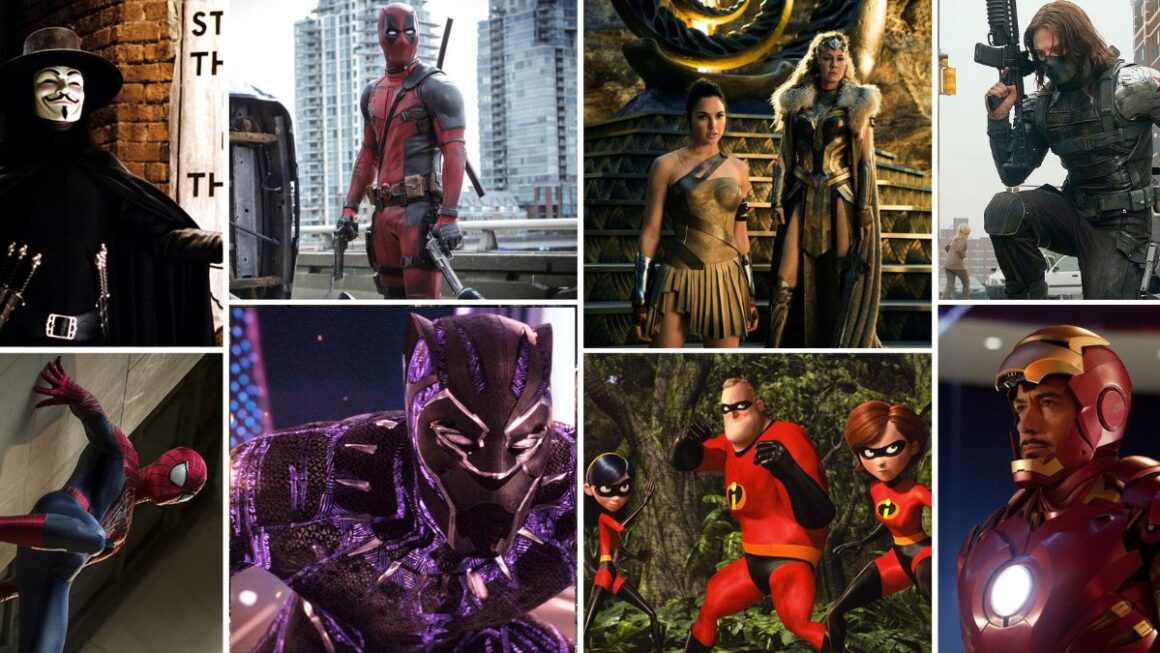Superhero movies have taken the film industry by storm, captivating audiences of all ages and dominating the box office year after year. From the iconic characters of Marvel and DC Comics to the recent surge in superhero franchises, there is no denying the immense popularity of these films. But what make superhero movies so popular? Why do they continue to capture the hearts and imaginations of millions around the world?
In this blog, we will explore the factors that contribute to the widespread appeal of superhero movies. From the historical context of the genre to the power of superhero characters, the allure of escapism and fantasy, the visual spectacle and action sequences, cultural relevance and representation, as well as the emotional connection and underlying themes, we will delve into the reasons behind their overwhelming success.
What Make Superhero Movies So Popular?
Historical Context of Superhero Movies
Superhero movies have a rich history that spans several decades. Understanding their historical context is crucial in appreciating their enduring popularity. Let’s take a closer look at the evolution of superhero movies and the milestones that have shaped the genre.
Early Origins and Milestones:
- The birth of superhero movies can be traced back to the 1940s and 1950s, with the serials featuring characters like Superman, Batman, and Captain America. These low-budget productions laid the foundation for the superhero genre.
- In 1978, Richard Donner’s “Superman: The Movie” starring Christopher Reeve became a groundbreaking film that redefined the possibilities of superhero storytelling. Its success paved the way for future superhero blockbusters.
Rise of Comic Book Adaptations:
- The 2000s marked a significant turning point with the release of “X-Men” (2000) and “Spider-Man” (2002). These films demonstrated the commercial viability of comic book adaptations and kickstarted the modern era of superhero movies.
- Marvel Studios emerged as a dominant force, beginning with “Iron Man” (2008) and the subsequent establishment of the Marvel Cinematic Universe (MCU). The interconnected storytelling and post-credits scenes created a shared universe that enthralled audiences.
Expansion and Diversification:
- The success of the MCU inspired other studios to expand their superhero franchises. Warner Bros. revived the Batman franchise with Christopher Nolan’s dark and gritty “The Dark Knight Trilogy,” while DC launched its own shared universe with films like “Man of Steel” (2013).
- Superhero movies diversified in terms of tone, style, and characters. Films like “Guardians of the Galaxy” (2014) brought humor and cosmic adventures, while “Black Panther” (2018) celebrated African culture and became a cultural phenomenon.
Cultural Impact and Record-Breaking Success:
- Superhero movies not only dominated the box office but also became a global cultural phenomenon. They transcended the niche comic book fandom and reached mainstream audiences.
- Films like “The Avengers” (2012), “Avengers: Endgame” (2019), and “Black Panther” (2018) shattered box office records, demonstrating the massive appeal of superhero stories.
Advancements in Technology and Special Effects:
- Technological advancements played a crucial role in bringing superheroes to life on the big screen. CGI, motion capture, and other visual effects techniques allowed for spectacular action sequences and stunning visuals.
- The ability to realistically portray larger-than-life characters and their superhuman abilities elevated the cinematic experience and contributed to the genre’s popularity.

The Power of Superhero Characters
One of the primary reasons for the immense popularity of superhero movies lies in the compelling nature of their characters. Superheroes possess qualities that resonate with audiences on a deep and emotional level. Here we have talked about few of them:
Relatability and Aspiration:
- Superheroes are often portrayed as individuals who possess extraordinary powers or abilities, but they also face relatable challenges and struggles. Their flaws and vulnerabilities make them more human and relatable.
- Audiences find inspiration in superheroes who overcome adversity and rise above their limitations. Their determination, resilience, and moral compass provide a source of motivation and aspiration.
Escapism and Wish Fulfillment:
- Superhero characters offer a form of escapism, allowing viewers to immerse themselves in a world where the impossible becomes possible. They provide an outlet for fantasizing about what it would be like to possess incredible powers or abilities.
- Through superhero characters, audiences can vicariously experience thrilling adventures, epic battles, and moments of triumph. This escapism offers a temporary reprieve from the realities of everyday life.
Symbolism and Ideals:
- Superheroes often embody symbolisms and ideals that resonate with society. They represent justice, courage, and the fight against evil. These characters become beacons of hope, inspiring viewers to believe in the power of doing good and making a difference.
- The symbolic nature of superheroes allows audiences to connect with broader themes and explore universal values such as heroism, sacrifice, and the pursuit of a better world.
Psychological Impact:
- Superhero characters can have a profound psychological impact on audiences. They provide a sense of comfort and security by representing a force of good in a world filled with uncertainties.
- The identification with superheroes can foster a sense of empowerment and self-belief. Watching characters overcome challenges and save the day can instill a belief in one’s own ability to overcome obstacles and make a positive impact.
Diverse Representation:
- In recent years, superhero movies have made significant strides in embracing diversity and representation. The introduction of diverse superhero characters allows underrepresented groups to see themselves reflected on the big screen.
- By showcasing a range of backgrounds, cultures, and perspectives, superhero movies foster inclusivity and provide a sense of validation for marginalized communities.
Visual Spectacle and Action Sequences
Superhero movies are renowned for their jaw-dropping visual spectacle and adrenaline-pumping action sequences. These elements play a significant role in captivating audiences and keeping them on the edge of their seats.
Firstly, the advancement of technology and visual effects has revolutionized the way superheroes are brought to life on the big screen. Computer-generated imagery (CGI), motion capture, and other cutting-edge techniques allow filmmakers to create stunning visuals and seamless integration of superhuman abilities. From the awe-inspiring flight of Superman to the intricate web-slinging acrobatics of Spider-Man, these visual feats immerse viewers in a world where the impossible becomes visually tangible.
The epic scale of action sequences in superhero movies adds to their appeal. From exhilarating hand-to-hand combat to larger-than-life battles against formidable foes, these sequences are carefully crafted to elicit excitement and awe. Choreographed fight scenes, explosive set pieces, and high-speed chases create a sense of kinetic energy and spectacle that heightens the cinematic experience.
The visual spectacle and action sequences in superhero movies not only entertain but also serve as a means of escapism. Audiences are transported into extraordinary worlds where they can witness breathtaking displays of power and heroism. The sheer magnitude of these scenes, coupled with stunning cinematography and dynamic editing, elicit a sense of wonder and awe. They offer a break from reality and allow viewers to be swept away into a visually dazzling universe.

Emotional Connection and Themes
Superhero movies possess a remarkable ability to forge emotional connections with audiences. Beyond the flashy action and dazzling visuals, these films often explore profound themes and evoke a range of emotions.
Superheroes are not merely vessels of power; they grapple with personal struggles, inner conflicts, and moral dilemmas. Their vulnerabilities and human flaws make them relatable, allowing audiences to empathize with their journeys. By showcasing the emotional depth and growth of these characters, superhero movies create a compelling narrative that resonates with viewers on an emotional level.
Themes such as identity, self-discovery, the battle between good and evil, sacrifice, and redemption are common threads woven throughout these narratives. These themes tap into fundamental aspects of the human experience, inviting audiences to contemplate their own values and beliefs.
Conclusion
Superhero movies have undeniably achieved unprecedented popularity and cultural significance. Through their compelling characters, relatability, and ability to provide an escapist experience, these films have captured the hearts and imaginations of audiences worldwide.
Also Read: 10 Superheroes Who Never Showed Their True Identity



